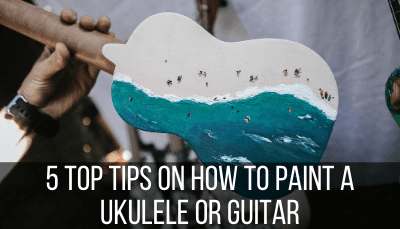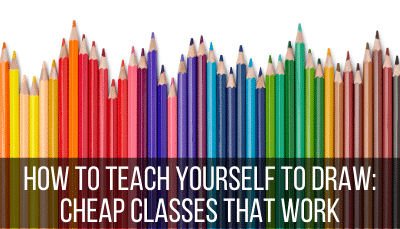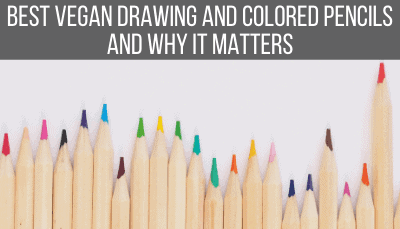What Is A Contour Line Drawing
This post may contain affiliate links
From the time we're kids, we all grab crayons and start scribbling shapes. Little did we know that we were all budding contour artists. Contour drawing is one of the most common types of drawing and makes up a lot of the art that we create and enjoy.
A contour drawing is an outline of a shape without any shading, texture, or tone. Contour drawings have very little detail and only consist of lines. Considered one of the most basic types of drawing, contour drawing is what many of us learn first as artists.
All of us make contour drawings all the time, but it's easy to forget the meaning behind them and why they matter. In fact, contour drawing has a lot of benefits aside from being an easy art form to pick up. Let's dive into what contour drawings are, how you can make the most of them, and why they'll improve your art.
1) Pure Contour Drawing
Pure contour drawing is the simplest form of contour drawing and only consists of the most basic outlines of the shapes you're drawing. For example, if you're drawing an apple, you would draw the round shape and a stem. You wouldn't draw the bruises, wormholes, or scratches. You also wouldn't draw the highlights and color variations. Just lines.
How Can Pure Contour Drawing Improve Your Art?
Even though pure contour drawing is simple, the benefits of it aren't. Remember that pure contour drawing is how most of us learn art in the first place. From the moment that we pick up a crayon, we're trying to understand how to put our world onto paper. We try to reproduce shapes, struggle with making straight lines, and work hard to craft circles that don't look like eggs.
Overtime, we start to learn how to keep our hands steady as we draw. We also start to learn how shapes come together to make objects. We use a combination of circles and squares to make stick figures; we draw buildings and people that are way out of proportion to each other; we draw everything in 2D with no dimension. As we learn, we make a lot of mistakes. All the while, we're still using the same technique of pure contour drawing.
As artists, many of us move on from pure contours and want to start adding shading, and the textures that make our art look realistic. Some of us even leave the pencils behind and start exploring paints or watercolors. We forget that our entire art journey started with the basics, with pure contour drawing.

Spending some time with pure contour drawing will bring you back to the basics of your art and force you to see things in their simplest forms. You'll rediscover the basic anatomy of the objects around you and how they're all simply made out of a combination of lines. Without focusing on all of the details of what you're trying to draw, pure contours will let you practice the basics and actually see objects differently, for the simple shapes that they are.
Going back to basics may sound boring, but it's so important. It's amazing how our abilities to draw simple shapes can deteriorate when we're so focused on shading and details (source). Pure contour drawing will help you practice the basic skills you may not have practiced for a long time.

2) Blind Contour Drawing
Blind contour drawing is just that, a contour drawing that you make while "blind" or without looking at the paper. With this technique, you will spend 100% of your time looking at the object you're drawing and 0% of your time looking at your paper. This means that, even when you need to pick up your pencil to reposition it, you don't look down at your paper. You complete your entire picture without looking, from start to finish.
How Can Blind Contour Drawing Improve Your Art?
If you have been baffled by the benefit of contour drawing in general, you'll be especially confused by the purpose of blind contour drawing. How the heck would it help my art skills to draw something without even looking? Yes, a blind contour drawing does mean that you draw blind and draw an object without ever looking at your paper or pencil. To understand, let's talk about how we normally draw.
Let's say that you're trying to draw a picture of an apple sitting in front of you. Your eyes dart from the paper to the apple from the apple to the paper from the apple to the paper over and over again as you try to get the shapes right. All this time, your eyes are trying to make sense of the shape of the apple in front of you as well as the shape you're making on your paper and trying to make sure the two of them match. This is a lot of work.
When you do blind contour drawing, your eyes get to focus on the object, while your hands get to focus on the pencil movements. This gives you a much more natural and instinctive sense of the shape you are trying to draw. You are literally drawing what you see.
Blind contour drawing forces you to let go of all of the preconceived notions you have about how shapes "should" be formed and forces you to draw a shape as it actually is and how you actually see it. For example, you may think that an apple is a circle. But, when you draw it blindly, you realize that it's much more of an upside down squash-like shape. This fundamentally changes how you "see" the shape of an apple moving forward.
Research supports the benefits of blind contour drawing, stating that artists showed great improvements in drawing an object that they had also drawn blindly (source). So, if you're stuck trying to draw a certain object, try drawing it blindly and you may discover what was going wrong.
3) Modified Contour Drawing
Modified contour drawing is similar to blind contour drawing, but it lets you look at your paper every once in a while (source). Even though you want to spend most of your time looking at the object you're drawing, if you ever need to move your pencil to a new spot, you can take a glance at your paper to make sure your aim is right.
How Can Modified Contour Drawing Improve Your Art?
Many people hear about modified contour drawing and jump on it. Heck yes, I want to look at my paper when I draw while still getting the benefits of contour drawing! It's actually a lot harder than it sounds. Once you give yourself even a little bit of permission to look at your paper, it's hard to stop. In the beginning, you'll notice that you're looking at your paper far more often than you should be.
Modified contour drawing can be a great way to get instant feedback. Most of the time, you're not looking at your paper and you're using your observational skills and intuition to draw the shape. But, when you look down, you can see where you went wrong mid-process. With blind contour, you may not see an issue until you're fully finished with your drawing and look at your paper. At that point, it might be too late. Modified contour drawing gives you a chance to rectify a problem as you go.
The benefits of modified contour drawing only happen if you're good about not looking at your paper too much. Otherwise, you might as well be doing a normal contour drawing.
To help with this problem, set some rules for yourself. Maybe you can only look at your paper once a minute. Maybe you can only look at your paper to position your pencil, but never while your pencil is moving. Maybe you only let yourself look at your paper 3 times the entire time you're drawing. Set up some boundaries for yourself to make it easier to control the temptation to look at your paper.

4) Continuous Contour Drawing
A continuous contour drawing is made out of one line without ever lifting the pencil from the paper. You've probably seen kids experiment with this technique without even knowing that it's benefiting their art. It's fun! A continuous contour drawing is like an artistic puzzle that can make some interesting looking art.
Some artists combine this technique with the blind technique, drawing their image in one continuous line without ever looking at the paper. Blind drawing is never easy, but using one continuous line can make it easier to know where you are on the paper and where your next mark should be. One of the biggest challenges of blind drawing is picking up your pencil and not knowing where to put it back down again. Using one line can ease this issue, though it won't make it easy by any means.
How Can Continuous Contour Drawing Improve Your Art?
When doing a continuous line drawing, you'll give your artistic brain a workout that it isn't used to. It's like going to the gym and doing squats after a year of running on the track. It will feel weird and you'll be sore, but you'll start building new skills.
One of the crucial skills you will build with continuous contour drawing is forward thinking. Where do I move next so that I can be in a good position for the next line and the next and the next? Is it the right time to complete this line, or should I go elsewhere and come back to it?
There is so much value in being able to understand the entire plan for how your drawing is going to come together. Continuous line drawing will force you to think about how every line comes together and works together. Looking at the bigger picture from the very beginning can make sure that you won't forget any key elements and that you've taken everything into consideration.
This continuous technique will also force you to be really careful about making mistakes. Mistakes are great and every artist should learn to love them. Mistakes are how we learn. But, there are times when mistakes are careless and we don't take the time to learn from them. We're so focused on getting the next line right that we don't realize that taking time to analyze the mistakes might give us the answers we're looking for.
Whenever you make a mistake with continuous art, you've basically created a puzzle that you need to solve. Instead of picking up your pencil, grabbing your eraser, and not even thinking twice before trying again, you have to think through how you went wrong and how you're going to fix it. How are you going to move your pencil from where it is now to where it needs to go? Sometimes, that isn't an easy question to answer.

You may be wondering what the benefit of problem solving within the context of continuous contour drawing is useful to being with. How often will you really be drawing with only one line? Probably not often, but that doesn't mean that the problem solving isn't helpful. Thinking your way out of a problem will help your brain think about your art in a new and different way. It will get you out of your regular patterns and routines, which is always a great thing.
5) Cross Contour Drawing
Out of all of the contour drawing forms, cross contour drawing is one of my favorites to look at. Not only is it a great exercise, it can also be amazing as finished art. Cross contour drawing uses lines to represent the curves, dips, values, bumps, and turns of the objects you're drawing (source). There are no other lines in a cross contour, not even and outside outline. This means that every angle needs to be correct so that the object looks like what it's supposed to look like when you're done. Basically, you're solely using interior lines to depict the value, tone, and shape of an object. Pretty neat, right?
How Can Cross Contour Drawing Improve Your Art?
Cross contour drawing is a great test in observing shapes in a very precise way. I know that apple is round, but how round is it? I know that the mug dips in the center, but how much does it dip? If you interpret these angles incorrectly, you could end up with an oblong apple or a very shallow mug.
All contour drawing is a workout for your observational skills. What I like about cross contour is that it's specifically a workout for the complexities of how objects are shaped. Contour drawing teaches you that a shape is more than just an outline. Instead, there is a lot of depth within it that is made from twists and turns. While you're only using lines, this will teach you a lot about shading, value, and tone.
Tips for Making Your Contour Drawings
–Choose simple objects. Extremely detailed objects aren't the best for contour drawings given that you're often drawing basic outlines. Trying to tackle too many details in a contour drawing can be really frustrating and defeat the purpose of a basic contour drawing to begin with. Especially when you're first experimenting with contour drawing, choose simple objects that have clear and clean outlines.
–Draw quickly. For many artists, contour drawings are great exercises, but they aren't meant to be finished works of art. Of course, there are some beautiful contour drawings.
For the most part though, contour drawings are great practice and not meant to be labored over. Drawing quickly will help you help you think on your feet, trust your instincts, and stop over analyzing your movements before putting pencil to paper.
These are great skills to have as an artist and essential for avoiding perfectionism. If contour drawing is practice anyway, you might as well practice these other skills at the same time.
–Forget about perfection. Don't get caught up in making a perfect contour drawing. Especially with the blind method, how the heck would you ever make that clean and perfect? In my opinion, art is never meant to be "perfect," but that's especially true with contour drawings. Let go of your expectations of how your drawing should look and simply enjoy the process of drawing.
–Develop a routine. Contour drawing is fun, but it might not be your first choice when you sit down with your pen and paper. You may need to force yourself to practice your contour drawings. Maybe you tell yourself that you'll do a contour drawing every Saturday as soon as you sit down. Maybe you tell yourself you'll do 3 contour drawings a month. Whatever method works for you, be intentional about developing a routine for your contour drawings so that you're always getting consistent practice with them.
–Connect your contour drawing with a bigger project. We've been talking a lot about how contour drawing is great practice and can refine your art skills overall. That said, contour drawing may have more meaning and benefit to you if you connect it to something you're working on.
Let's say that you are working on a portrait for your friend's birthday. For your contour practice, you work on different types of faces and different types of facial body parts. Maybe you contour some eyes, noses, mouths, and ears. This can help you refine your skills as a portrait artists and "see" faces differently. When you then sit down to work on your friend's birthday portrait, you understand more about drawing faces than you did before.

Wrapping Up the Benefits of Contour Drawing
No matter which type of contour drawing you choose, you'll be helping your art skills. Contour drawing will improve your observation skills and help you see the objects around you in a new way. Focusing solely on observation, you'll be able to put aside all of your preconceived notions of your art techniques and truly draw what you see. This can be liberating and a great way to shake up your drawing habits.
Throw in some quick contour drawings every few weeks and see what happens! You may be surprised to find that you start seeing objects differently and that your ability to understand shapes improves.
What Is A Contour Line Drawing
Source: https://adventureswithart.com/5-types-of-contour-drawing/
Posted by: mendelfroule.blogspot.com

0 Response to "What Is A Contour Line Drawing"
Post a Comment